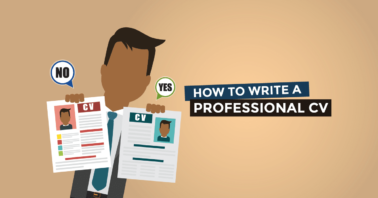Shortlisting candidates for a job opening can become difficult even for experienced HR managers and employers. When recruiting, your ultimate goal is to get candidates that are not only qualified but those that fit in your organisation’s culture as well. Before you commence the process the shortlisting candidates, there are certain things you need to look out for. You can’t just pick up your phone and invite all the candidates who applied for the opening you advertised to attend an interview. The shortlisting process is designed to help you separate the candidates you want from those you don’t want.
Table of Contents
Come up with a list of what you want
This is the very first thing you should do when you decide to fill a particular role.This list should reflect what you have in the job description for the role that you include in the ad. Let us look at an example. If you want to hire a Bank Manager for a branch, you don’t want to shortlist every single candidate that applies for the position. Rather, draw up a list of essential criteria that you expect candidates fit for the position should have. The better and more detailed your Job Description is, the easier it becomes to shortlist your desirable candidates.
Work with line managers
Before you begin shortlisting candidates, ensure that you work with line managers since it is easier to know exactly what they are looking for in a role that way. This helps the process move faster especially in a situation where you are expecting as many as 100-500 applications. This does not apply to cases with just a handful of applications; perhaps a role where candidates with such qualifications are usually scarce. A good example of this is a case where you want to hire a Scale Developer in Nigeria. You are bound to receive far lesser applications that if you were looking to hire a PHP Developer.
Another advantage of working with line managers when shortlisting is that it cuts down the likelihood of mistakes; there will always be a fresh pair of eyes to look at what others have done.
Separate essential vs desirable criteria
There is a clear difference between essential criteria and desirable criteria. Essential criteria are those that the candidate must possess to be considered for the role. An example of essential criteria for a Legal Associate would be ‘Ability to complete legal forms, conduct legal research of laws, draft policies and business correspondence.’
Desirable criteria, on the other hand, are those things that make the candidate stand out as a better candidate when compared to other candidates with the same essential criteria. In a lot of cases, the lines between essential and desirable criteria are blurred but separating them makes the process of shortlisting far easier than if you don’t.
An example of this is when you peg the minimum years of experience for a role at 4 years. If it happens that 75 per cent of candidates have at least 4 years of experience, this criterion becomes an essential one when you begin to drop candidates who do not have a minimum of 4 years of experience. Therefore, there is a need to separate these two before you get into the heat of shortlisting.
Use a shortlisting scorecard
When you have clearly defined the difference between the essential and desirable criteria, you then proceed to create a shortlisting scorecard for the candidates. The scorecard will allow you assign scores to each of the candidates before you eventually use this to decide which candidates you decide to shortlist.
When you have a scorecard, it ensures that you keep your shortlisting regularised. It also gives you the ranking of the candidates based on your criteria and the scorecard.
Pay attention to the final stage of shortlisting
The final stage of shortlisting is often overlooked and this results in slips and avoidable errors in the final list of shortlisted candidates. This is the stage when a large number of applicants has been cut down to a list of candidates that are suitable for the job.The fact that you have a list does not mean that the job is done. The final stage is quite sensitive in that it has the potential to throw up surprises. There are situations when after shortlisting, you are still left with more applicants than you can practically hire. This is what panel interviews are meant for because you cannot get the exact number of candidates you want by shortlisting. What shortlisting does is to prune the number of applicants down to a manageable size.
You should cast all prejudice aside and focus on shortlisting only the best candidates.
Final thoughts
Please remember that as an employer, you are obliged to treat all candidates equally during the entire recruitment process, regardless of their sex, skin colour, age, religious affiliations, marital status, criminal records, HIV status, disability or other things that are entirely personal or totally beyond their control.
It is your responsibility to give them an equal opportunity to get the job opening you are shortlisting for. If they are to be excluded from the process, then it has to be for reasons directly related to their qualifications. Strive to make the process fair to all candidates. Discover, shortlist and hire the best and brightest candidates for your company.










